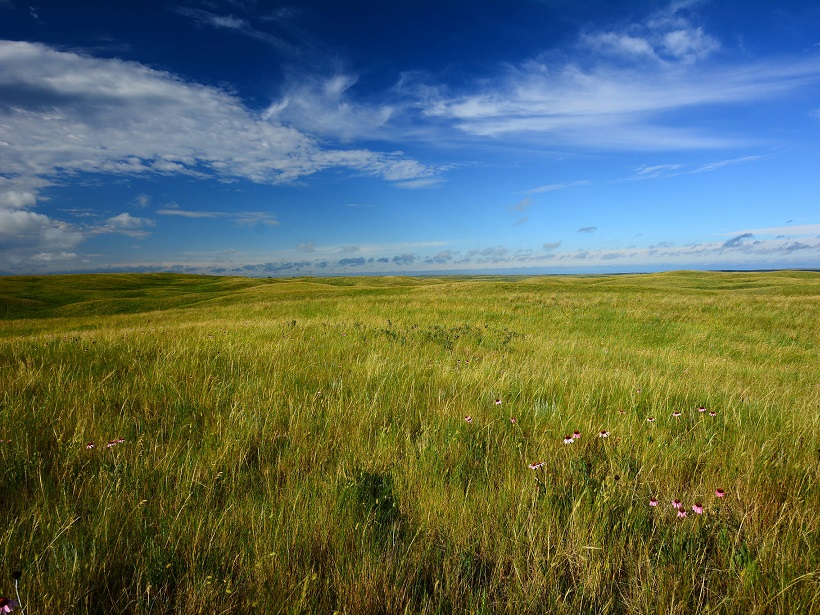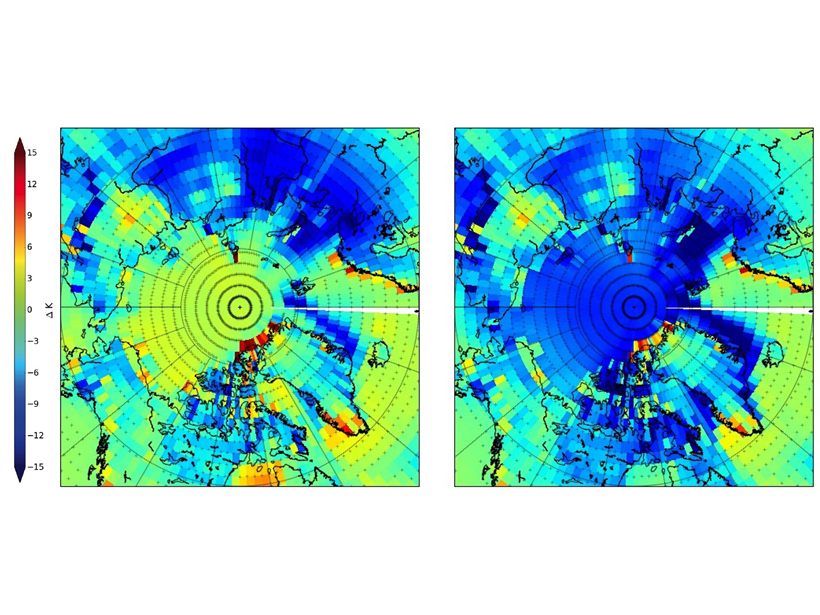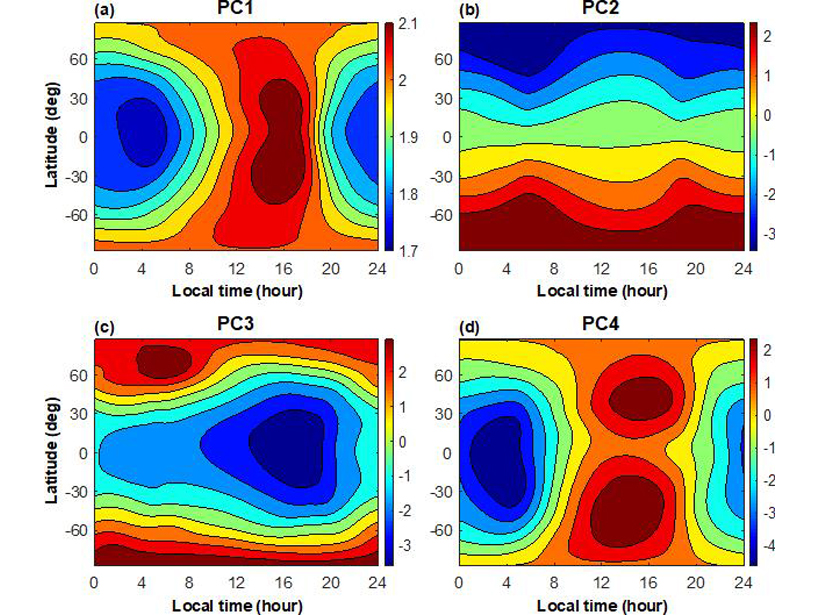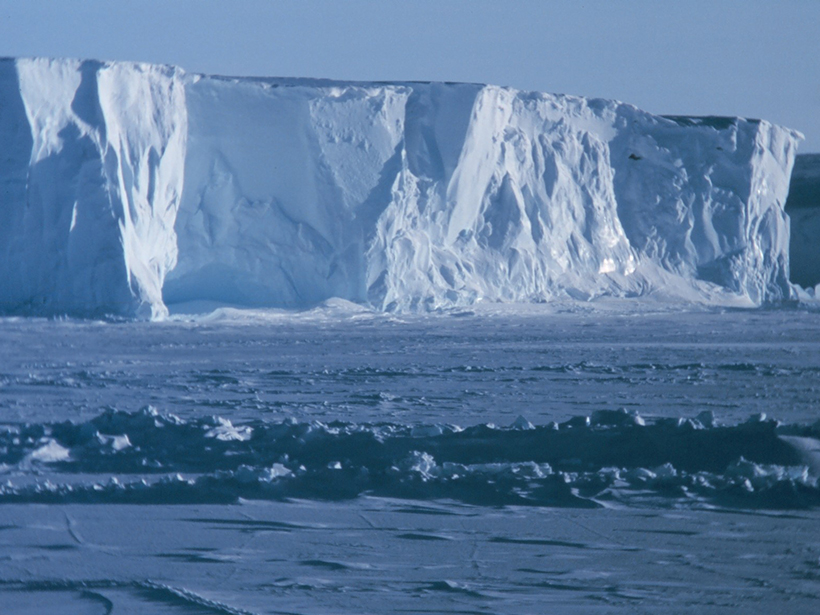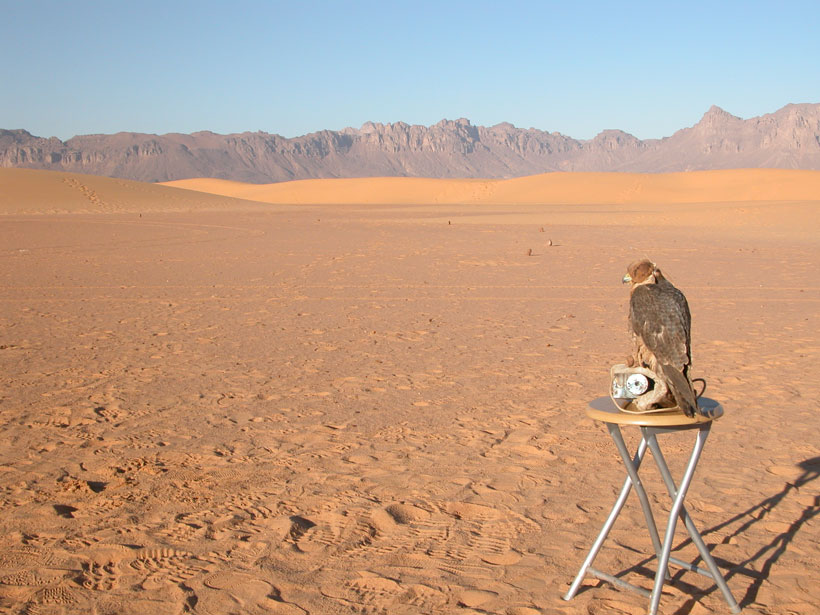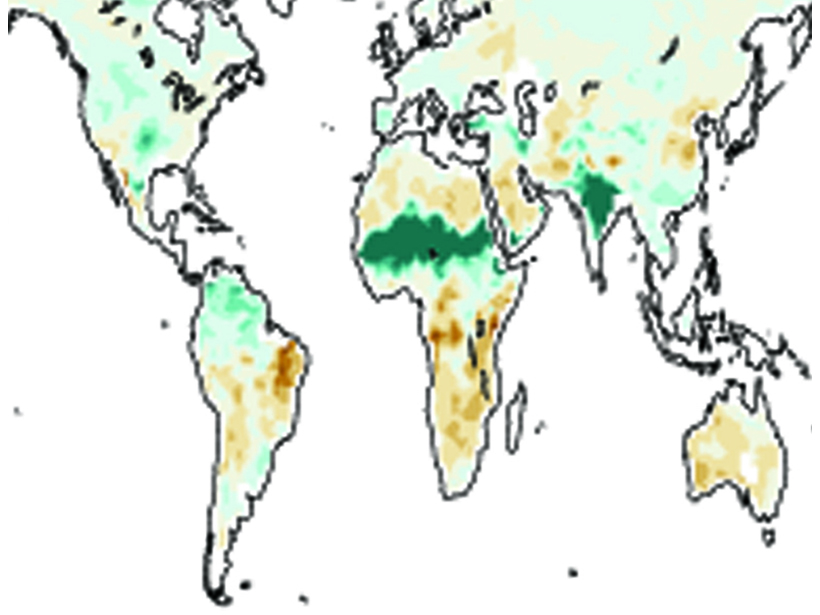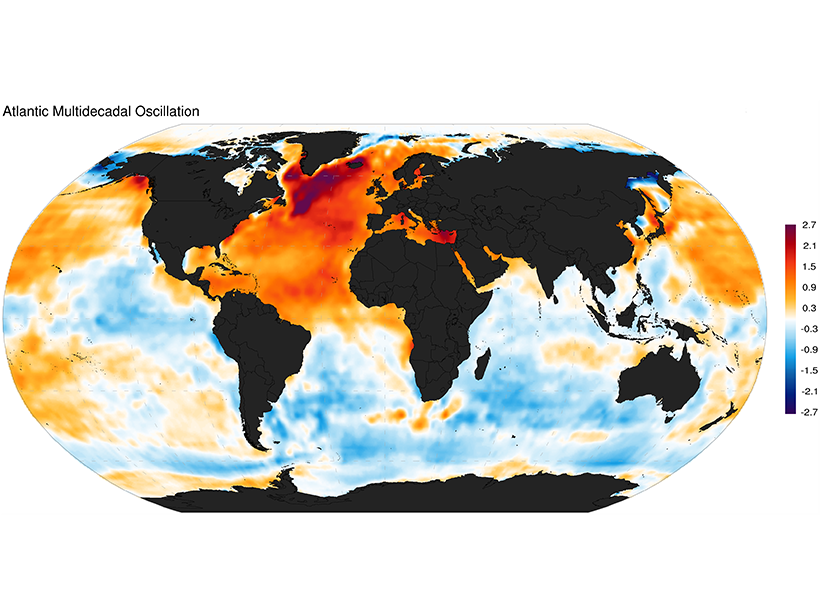A set of four papers published in JGR: Atmospheres present results from a project investigating why models predict warmer surface temperatures than are observed in the central United States.
temperature
Spectral Surface Emissivity Improves Arctic Climate Simulation
Improving the representation of surface emissivity in the Community Earth System Model reduces its Arctic winter cold bias from 7 to 1 Kelvin degree.
Improving Temperature Forecasts in the Upper Atmosphere
Scientists are blending output from multi-year model runs to improve temperature forecasts in regions where satellites experience “drag,” in the hopes of avoiding future spacecraft collisions.
Fresh Insights into What Protects Antarctica’s Ross Ice Shelf
Scientists bored 755 meters through Antarctic ice and found that a layer of extremely cold, fresh water insulates part of the Ross Ice Shelf against melting.
Medieval Temperature Trends in Africa and Arabia
A synthesis of paleotemperature reconstructions from published case studies suggests warm onshore temperatures persisted across most of Afro-Arabia between 1000 and 1200 CE.
Global Average Temperatures in 2017 Continued Upward Trend
Even when the warming from El Niño is removed, 2017 ranks among the hottest years on record.
Rising Ocean Temperatures Threaten Carbon-Storing Sea Grass
A new model predicts that as ocean temperatures rise, carbon-storing sea grass may disappear and even go extinct in some ecosystems.
Wet Soils Elevate Nighttime Temperatures
Soil moisture can elevate overnight temperatures, offsetting daytime cooling, especially over areas of strong land-atmosphere interactions.
Ocean Dynamics May Drive North Atlantic Temperature Anomalies
A new analysis of sea surface temperature and salinity over several decades seeks to settle the debate on which of two mechanisms underlies the Atlantic Multidecadal Oscillation.
Probing the Power of Pacific Supertyphoons
Despite higher than normal surface temperatures and heat contents of ocean waters where the storms developed, evidence is lacking that global warming is revving them up.

